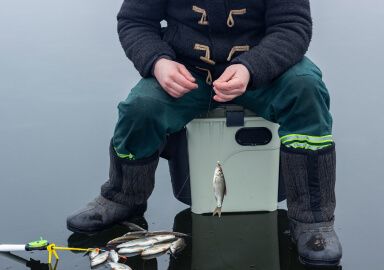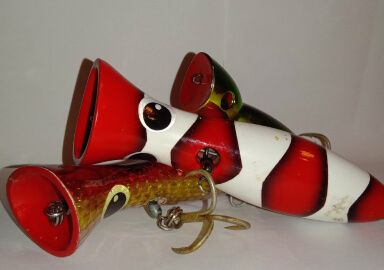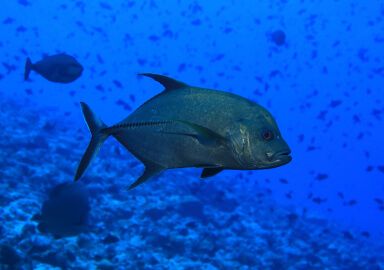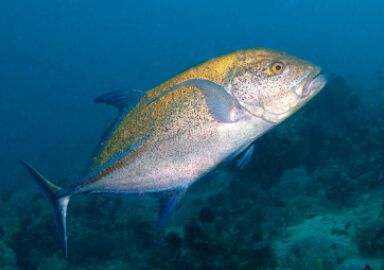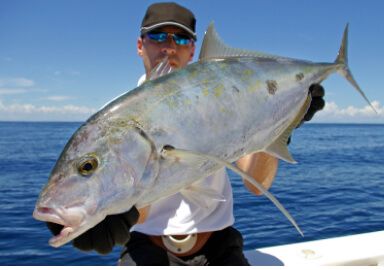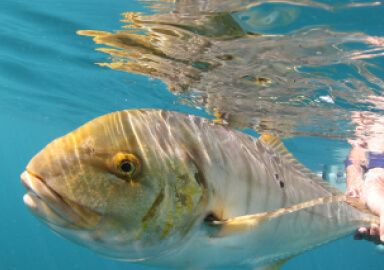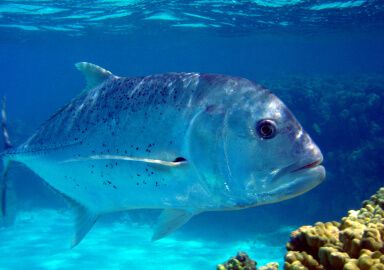Bigeye Trevally
Bigeye trevally are medium sized, exciting, enthusiastic predatory fish of the Indo-Pacific coastal waters.
View 9 listings
9
listings
–
price starting from
5
countries
–
to the nearest trip
Where and When?
Bigeye trevallys are distributed in the Indian and Pacific Oceans from eastern South Africa right across to California and Ecuador. They are also an important fishing species around oceanic archipelagos, Australia and Japan. As mostly an inshore species, bigeye jacks are often found around structures such as rocky or coral reefs. They can form dense shoals, which can appear like black masses in the water and become resident in suitable areas for long periods. In some areas they migrate far up estuaries and rivers while other fish may be found occasionally far offshore, but usually associated with floating debris. The depth range is usually given as ranging from intertidal areas to 100 m. (328 ft.).
During the day the fish may be in deep water but come very close inshore to feed after dark. The species does not seem to undergo clear migrations and is usually resident where it occurs. Fishing is generally more successful during the warmer months, especially in estuaries or up rivers, but the species can be caught throughout the year. Most fishing is carried out during the day but, as the large eyes suggest, the species feeds through the night and may become “bolder” in terms of approaching shallower waters and reefs.
About Bigeye Trevally
The bigeye trevally (Caranx sexfasciatus), also known as bigeye kingfish or dusky jack, is one of the larger members of the Carangidae (jacks or kingfishes). It has a compressed, oblong body with a pointed snout. As the name implies, it has large eyes and is one of the more robust jacks. Juveniles are silvery yellow, often with six dark bars leading to its scientific name (sex meaning 6), while the adults are usually darker blue or green above blending down the flanks to become almost creamy white underneath. The main dorsal fin has a characteristic white tip. The mouth, right at the front of the head, is fairly large with strong teeth. As juveniles, bigeye trevally feed on a variety of fish and invertebrates, and as adults, they prey mostly on fish. They can attain a maximum of 120 cm. ( 47 in.) and 18 kg. (40lbs.), but are much more common around 50-70 cm. (20-28 in.) in length. They mature at about 42 cm. (16.5 in.) and spawning takes place in middle to late summer when large aggregations form and then fish pair off to spawn.
How to Catch?
Like many of the Carangidae, bigeye trevallys can be bold and aggressive feeders and fighters. You can catch them from piers, beaches, rocky outcrops or from boats. Almost any kind of tackle can be used and both natural bait, artificial baits and flies are all effectively used by recreational anglers to target bigeye trevallys. The best approach depends mostly on the preference of the angler. They will take a wide variety of baits which may be floating, drifting or set on the bottom, with light or medium tackle. The fish move around a lot and so spinning using hard or plastic artificial lures can be especially effective, especially casting beside, towards, or right over a shoal and retrieving rapidly.
Bigeye trevally is very popular with fly-fishing enthusiasts, as “sight fishing” is often possible and the species, when hooked, plays strongly. Locating a dense, dark shoal of bigeye trevallys that is feeding can be among the highlights of any fishing holiday. The first cast can be made to just short of the shoal and then you usually see fish individually breaking off to chase your bait, lure,or fly. The largest fish often bites first and, if you can hold the fish away from the shoal, the shoal may hang around allowing for multiple hook ups. Bigeye trevallys are among the most popular game fish species due to their enthusiasm in taking the bait and ability to give an excellent fight.




